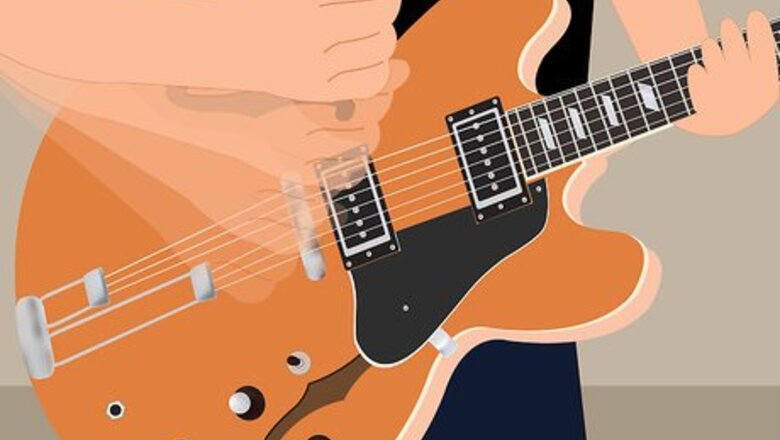
views
Fixing a Buzzing String
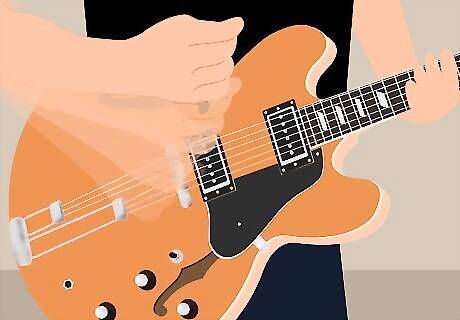
Test your technique. If you are a beginning guitar player, make sure you have the correct technique down. Pressing the strings too lightly or placing your finger too far behind the fret may cause buzzing.
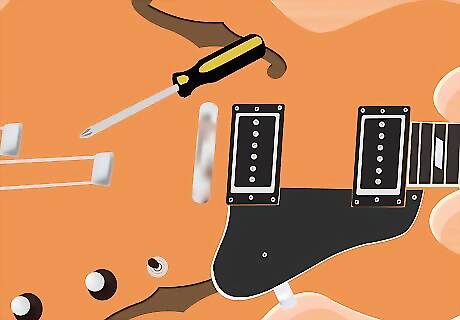
Raise the action. If a string is vibrating against the fret even on an open strum, one solution is to raise the strings higher above the fretboard. Most modern electric guitars have a bridge that can easily be adjusted using an allen wrench — and may even have controls for individual strings. If you can't figure out how to do this, look for an online video covering this process for your exact model of guitar. Acoustic or classical guitars typically have an ivory or plastic "saddle" at the bridge instead. You'll need to replace this piece with a higher saddle to raise the action. Note that adjusting the bridge will alter the intonation of the guitar.
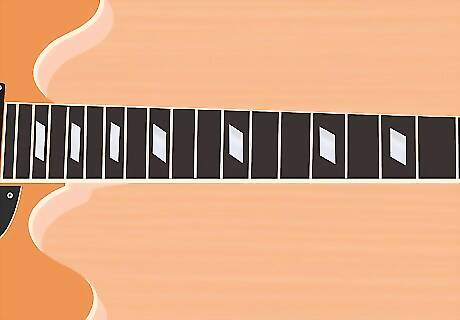
Check for a warped neck. Hold the body of the guitar, leaving the neck free, and point the top of the neck toward your eyes. Close one eye and look down the bass and treble sides of the wood to check for small bends. If your neck is bent, the truss rod inside the neck needs adjusting. (Most classical guitars do not have truss rods, but these should be built so the risk of warping is low.) For another test, lay a straightedge perpendicular to the frets. If the neck is straight, the straightedge should be able to touch every fret at once. You can also try sliding a piece of paper under the strings. If the paper catches on one string but not the others, the neck is probably bent.
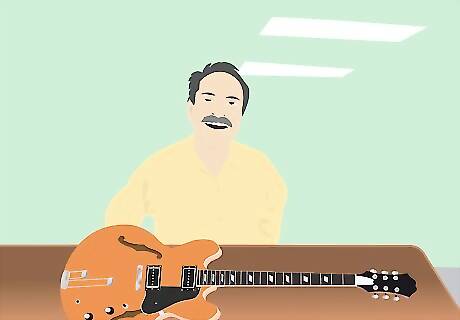
Have a professional adjust the neck (recommended). If your neck seems bent, you may need to adjust the truss rod inside the neck, or re-shim the neck where it meets the body. These repairs can easily damage your guitar if not performed correctly. Take your instrument to a guitar repair shop unless you have the proper tools and experience to adjust it yourself. A luthier (guitar repair technician) can usually adjust a truss rod within 24 hours, and may charge anywhere from US $30 to $300. This can get more expensive if other repairs are required. If you find someone willing to do a quick adjustment for free, consider giving a tip anyway; that's a good person to befriend.

Check the nut slots. At the top of the neck, each string fits into a slot cut into the nut. If one of these slots is too deep, that string may buzz. This problem might show up as a fault on a new guitar, or after someone has filed the nut slot down. If you think this could be the issue, take the guitar to a repair shop to have the nut replaced.
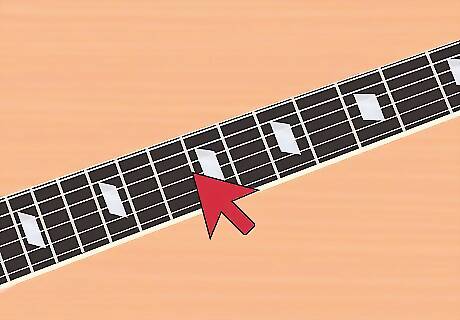
Repair worn frets. Some frets may wear down faster than others, causing the strings to rattle. This is usually obvious from visual inspection. Completely replacing a run of twelve frets can be somewhat expensive, and unfortunately rarely produces perfect results. You can save money by buying a fret replacement kit online, but be prepared for many hours of extremely precise gluing and sanding.

Raise the buzzing string with a piece of paper. Think of this fix as the "spare tire" for your guitar. You won't want to rely on it for long, but it will get you through your next rehearsal. This works best if only one or two strings are buzzing, but you can try it on any number of problem strings. Loosen the buzzing string enough to pop it out of the nut. The nut it the bar running across the strings at the very top of the fretboard. Pull the string slightly to one side. Fold a small piece of paper and stick it in the string notch. Pull the string back over the paper. Tighten the string slowly back into the proper position. Tear away any paper sticking out. If the string still buzzes, try raising it higher with a stack of paper three or four layers thick.
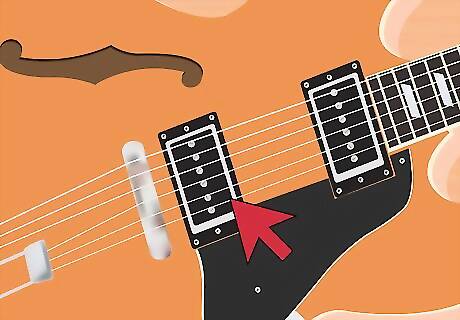
Lower the pick-up. If an electric guitar's pick-up is too high, the strings may buzz against it. Try lowering the pick-up to see if that fixes the problem.
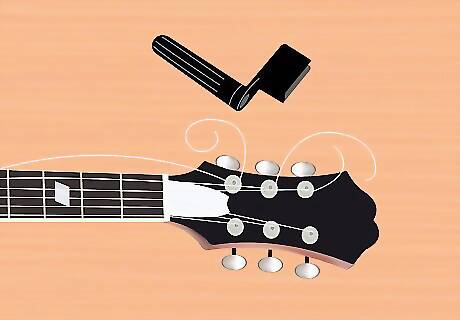
Check the strings. If the strings are attached too loosely at either end, they may buzz. Make sure they are knotted properly at the neck, and that their attachment point at the other end has not started to break loose from the guitar body.
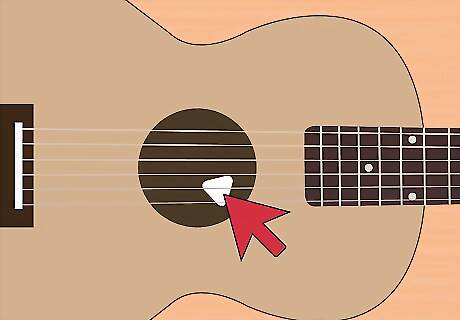
Look for loose objects on or inside the guitar. If none of the steps above match your problem, it may not be the strings buzzing at all. A pick, paper clip, or even a label that's slipped out of position will vibrate inside a hollow body guitar, causing unwanted noise. A loose object stuck on the outside of the guitar can also cause a problem. To remove an object inside a hollow guitar, use needle-nose pliers. You can also press a soda straw against the object, then inhale to hold it against the straw as you lift it out. Take care not to cut yourself on the strings, or push them so hard they break.
Fixing an Electrical Buzz

Test the amp. Turn on the amp with nothing connected to it. Slowly turn up the volume and see if you hear that buzzing noise. If you do, there may be a loose or frayed wire inside the amp. If there is no buzzing noise, you can rule out the amp as the source of the problem. Always unplug the amp before inspecting the internal wiring. You may be able to solder a loose wire yourself if you can identify the problem. If you think the buzzing could be feedback, move farther away from the amp when you play. Failing capacitors may cause a distinctive 60 cycle ground hum, especially in tube amps.
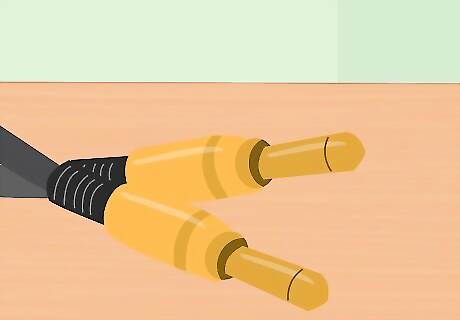
Switch cables. If you haven't already, try plugging in your guitar using a different cable. An old or worn cable is a common cause of noise, although this is usually a 60 cycle ground hum rather than a buzz.
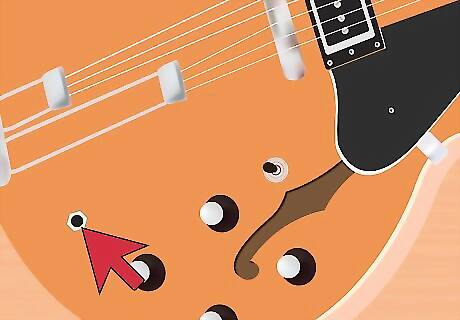
Check the cable input on your guitar. If this screw feels loose, tightening it can sometimes solve the buzzing issue. If this doesn't work, turn the guitar upside down, carefully unscrew the nut, and catch the connector. Check the connector's connections and re-solder them if necessary. Volume controls, treble and bass controls, and any other knob can be another source of loose wiring. Remove the knobs one at a time, remove the nut holding the potentiometer in place, and inspect the wiring. Never access these areas while the guitar is face up, or the connector could drop into the body of the guitar.

Wriggle the cable to test for loose wires. Plug the cable into your guitar and wriggle it. If you feel something loose inside the instrument, there is probably a loose wire causing an electrical short. This could be at the pickups, the pots (potentiometers), or input jack. If you are up to the task, you may remove the back plate and solder the loose wire back into place. However, the soldering iron can easily damage the guitar's finish and other wiring. If you are not experienced at soldering or cannot adequately protect the surrounding area, take the guitar to a professional luthier for repair.
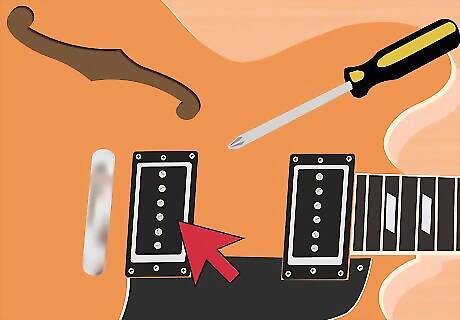
Check the wiring on the pick-ups. Depending on your model, you may need to remove the strings in order to unscrew the pickups. Once you have removed them from the guitar, check for loose connections and frayed wires. Make sure the connections are not touching any other metal objects.




















Comments
0 comment